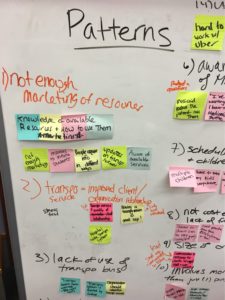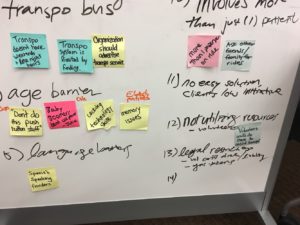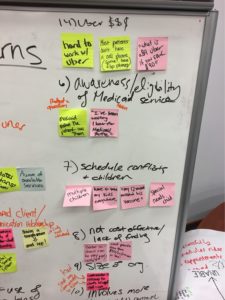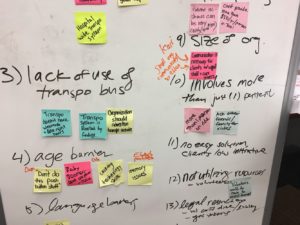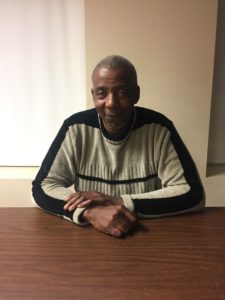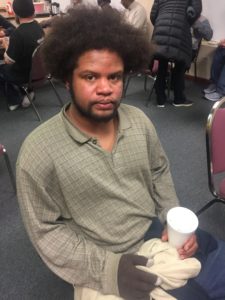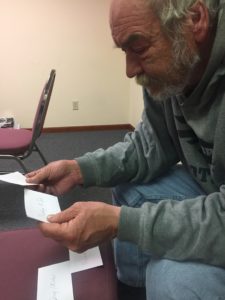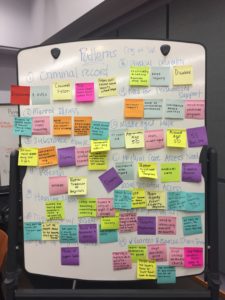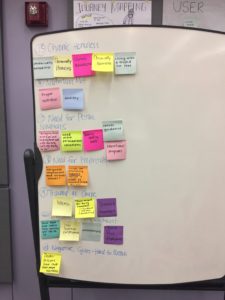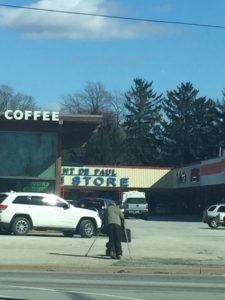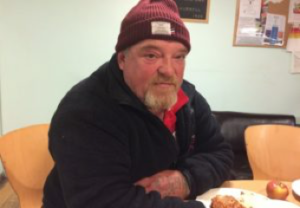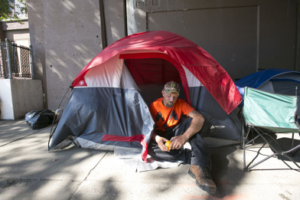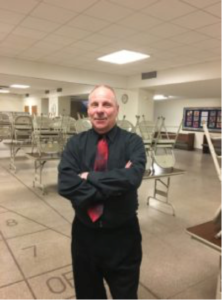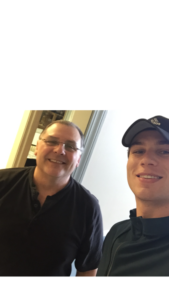Camille
Date: 3/9/17
Type: Expert Interview
Location: Boys & Girls Club Main Campus
Team Participants: Mark Harrel & Olivia Newey
User Characteristics:
-Middle aged
-In charge of the club at this location
-African-American
-Has a daughter that goes there everyday
-Drives a van to pick up some students
Memorable Quotes:
“Before transportation was an issue, we would have over 100 students coming into the club.”
“We only have one van and I am the one that has to drive it.”
Top 3 Learnings:
- Boys & Girls Club main issue is transportation.
- The Boys & Girls club have another issue where they do not have many employees or volunteers.
- Kids will be better off if they attend the club.
Key Insight: The Boys and Girls club need to find a way for the teenagers to get to the club. If they do, there will be many more students coming into the club and bettering themselves. Many kids want to go there for the social aspect but can’t go because they don’t have a ride.
Nick
Date: 3/15/17
Type: Individual Interview
Location: Phone
Team Participants: Conducted Interview alone
User Characteristics:
-current teenager
-athlete
-good grades
-caucasian
Memorable Quotes:
“I don’t go to the club because I don’t see a need for it.”
“After school, I go straight to practice and workouts. Then I have to get home to do my homework.”
Top 3 Learnings:
- Athletes are less likely to attend the club
- Kids will only go to the club if they feel there is a need
- Many teenagers think that the Boys & Girls Club is for little kids and not teenagers like them
Key Insight: Athletes and kids who already have really good grades probably won’t attend the club because they don’t see much of a need. With that said, some will still attend for the sole reason that they like the social aspect.
Mike
Date: 3/15/17
Type: Individual Phone Interview
Location: Phone
Team Participants: Interview conducted alone
User Characteristics:
-has attended the club for the last 3 years
-likes to go to the club because of the social aspect
-will rarely do homework there
-Caucasian
-teenager
Top 3 Learnings:
- Social aspect is main reason for attendance
- Many go to the club because they would be bored at home otherwise
- Many kids wish for more kids to attend because they want to meet new people
Memorable Quotes:
“I like to go to the club because it is a fun and safe place for me to hangout after school.”
“Going to the club is way better than being bored at home.”
Key Insight:
Some students will attend the club for the sole reason that they won’t be as bored. Mike doesn’t live in a neighborhood so it is very rare for him to hangout with friends when home unless someone can drive him to his friend’s house. This makes the club a perfect place for Mike to be after school.
Immersion Experience:
For my immersion thus far, I was able to go to the club and talk to Camille and some teens that attend. Moving forth, I intend to keep attending the club every couple of weeks and volunteer for a little bit. When I am there, I plan on playing sports with the kids and talk to them about their futures.
Key Insights: 1. The kids will often attend the club for the social aspect and meeting new people. Next to that, it will keep them from being bored at home. 2. After talking to Camille, the biggest problem is definitely the transportation. If there comes up a way to fund their transportation efforts, many more kids will be better off.
Analogous Immersion:
Our team plans on coming up with different activities that the kids can do when they attend the club. For example, we were thinking of having a 3 vs. 3 basketball tournament, with the winning team being rewarded some sort of a prize. On top of that, we are looking into different possible ways that the Boys and Girls Club can be given more vans or better transportation efforts.
